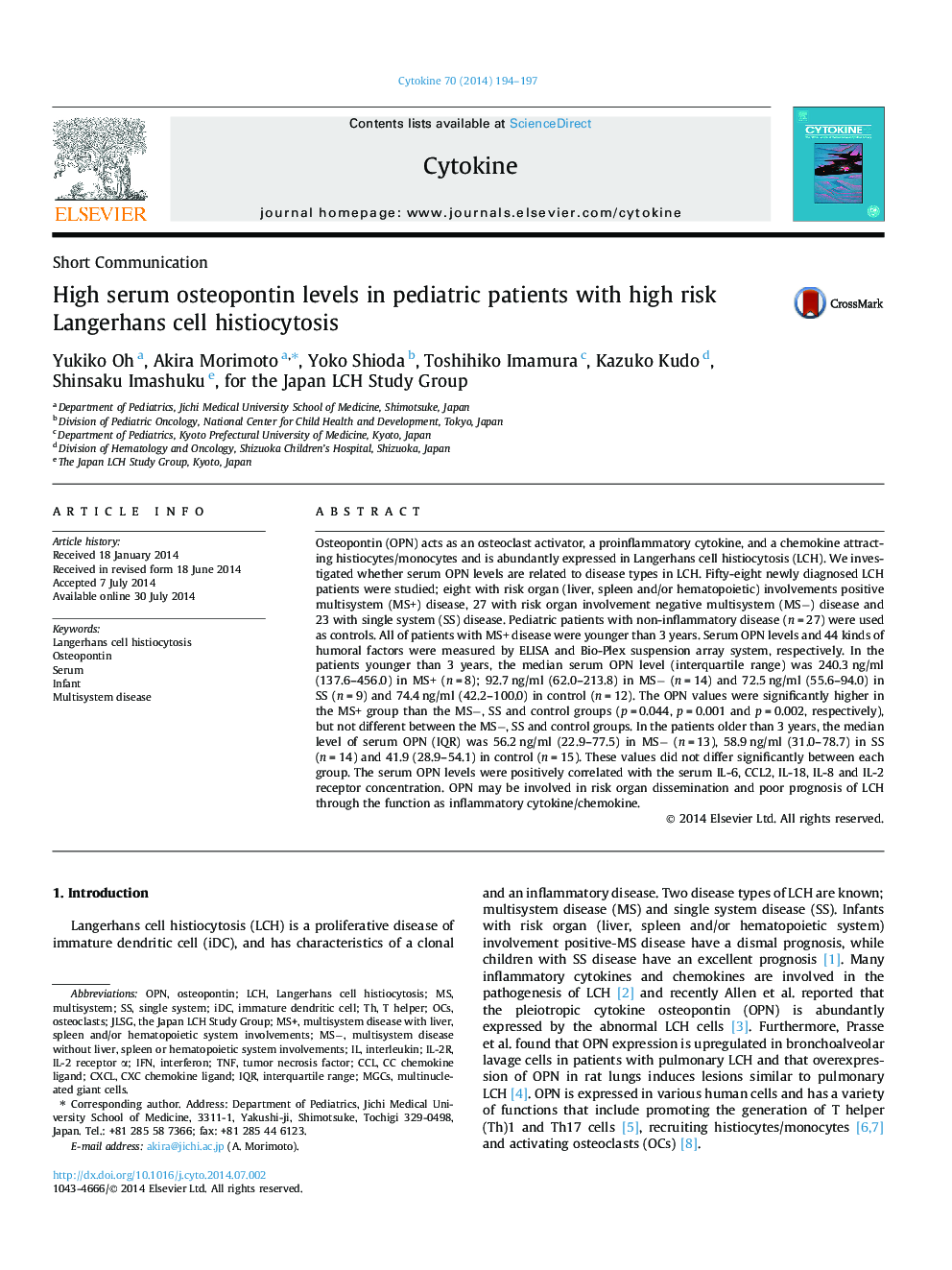| Article ID | Journal | Published Year | Pages | File Type |
|---|---|---|---|---|
| 5897097 | Cytokine | 2014 | 4 Pages |
Abstract
Osteopontin (OPN) acts as an osteoclast activator, a proinflammatory cytokine, and a chemokine attracting histiocytes/monocytes and is abundantly expressed in Langerhans cell histiocytosis (LCH). We investigated whether serum OPN levels are related to disease types in LCH. Fifty-eight newly diagnosed LCH patients were studied; eight with risk organ (liver, spleen and/or hematopoietic) involvements positive multisystem (MS+) disease, 27 with risk organ involvement negative multisystem (MSâ) disease and 23 with single system (SS) disease. Pediatric patients with non-inflammatory disease (n = 27) were used as controls. All of patients with MS+ disease were younger than 3 years. Serum OPN levels and 44 kinds of humoral factors were measured by ELISA and Bio-Plex suspension array system, respectively. In the patients younger than 3 years, the median serum OPN level (interquartile range) was 240.3 ng/ml (137.6-456.0) in MS+ (n = 8); 92.7 ng/ml (62.0-213.8) in MSâ (n = 14) and 72.5 ng/ml (55.6-94.0) in SS (n = 9) and 74.4 ng/ml (42.2-100.0) in control (n = 12). The OPN values were significantly higher in the MS+ group than the MSâ, SS and control groups (p = 0.044, p = 0.001 and p = 0.002, respectively), but not different between the MSâ, SS and control groups. In the patients older than 3 years, the median level of serum OPN (IQR) was 56.2 ng/ml (22.9-77.5) in MSâ (n = 13), 58.9 ng/ml (31.0-78.7) in SS (n = 14) and 41.9 (28.9-54.1) in control (n = 15). These values did not differ significantly between each group. The serum OPN levels were positively correlated with the serum IL-6, CCL2, IL-18, IL-8 and IL-2 receptor concentration. OPN may be involved in risk organ dissemination and poor prognosis of LCH through the function as inflammatory cytokine/chemokine.
Keywords
Related Topics
Life Sciences
Biochemistry, Genetics and Molecular Biology
Endocrinology
Authors
Yukiko Oh, Akira Morimoto, Yoko Shioda, Toshihiko Imamura, Kazuko Kudo, Shinsaku Imashuku, for the Japan LCH Study Group for the Japan LCH Study Group,
